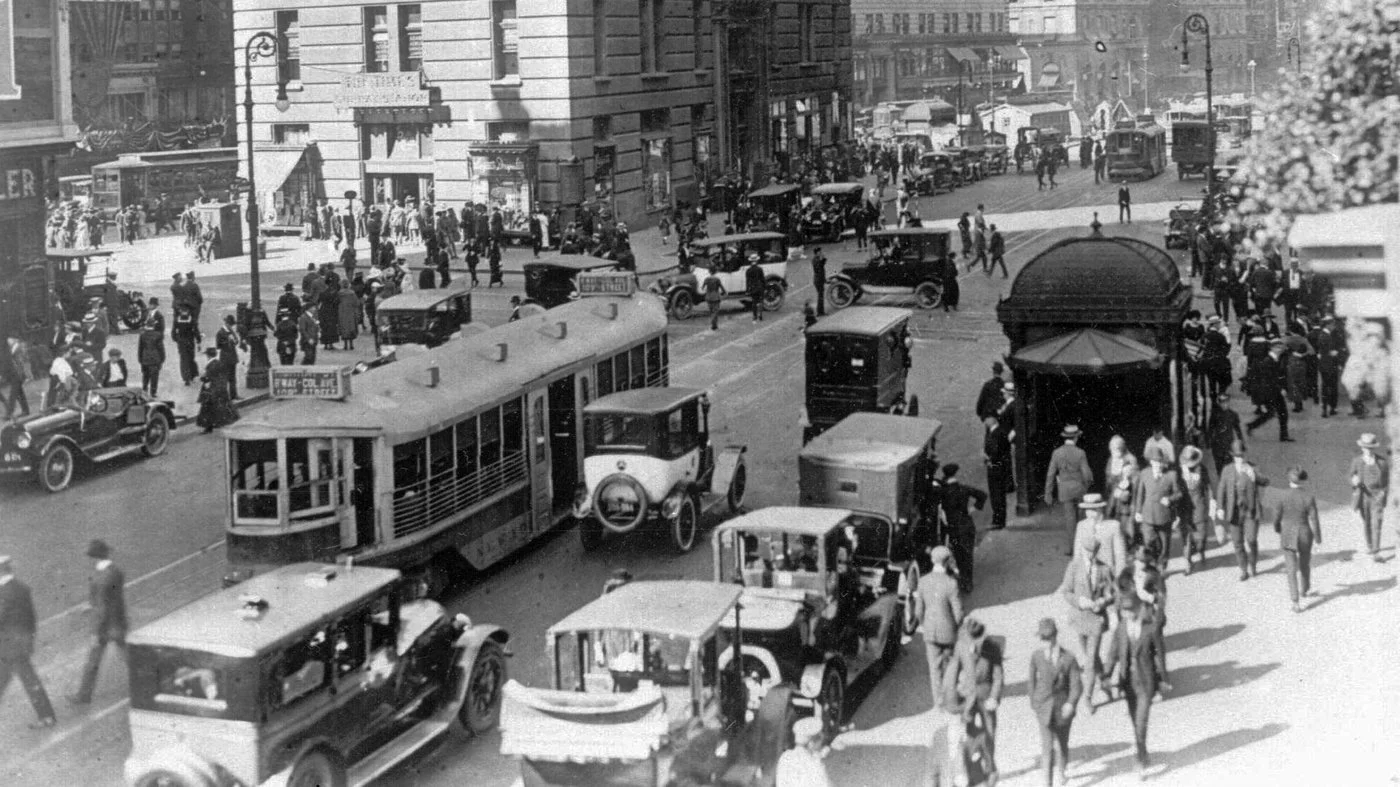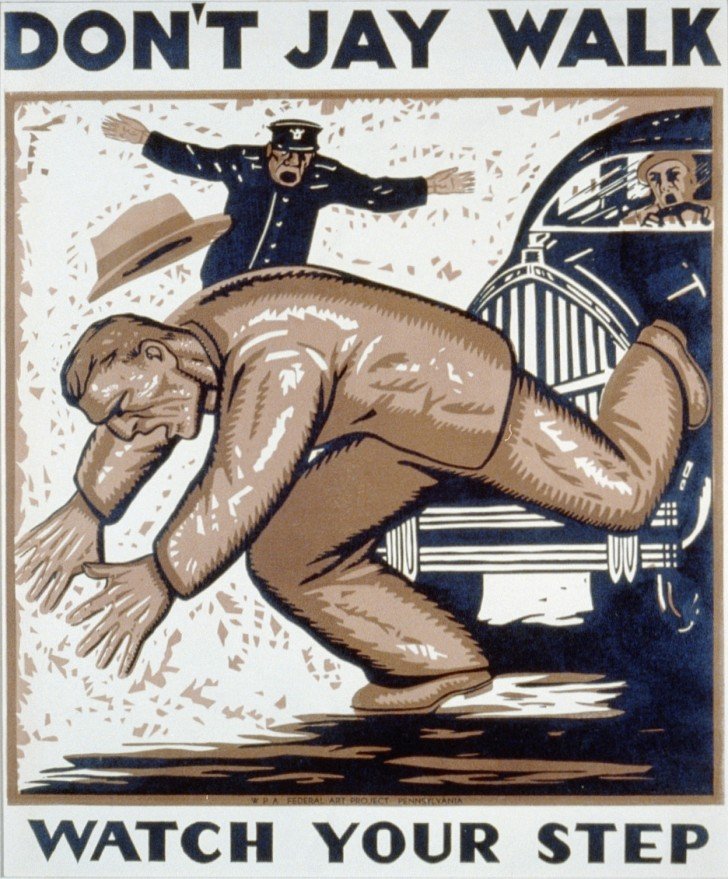The shaming of the jaywalker
Courtesy: Associated Press
The auto industry has been using implicit appeals for decades, of course, but one little known application had nothing to do directly with selling cars. It was about changing the behavior of pedestrians.
In the early 20th century, city streets were democratic places. Cars shared the roads with horses, bicycles, and, yes, pedestrians. But there were few crosswalks or walk lights – and even in cities where rules existed, police seldom enforced them. If you wanted to cross the street, you crossed the street. If you were a kid and you wanted to play in the road, you played in the road.
Obviously, this was dangerous as hell. People were getting run over all the time, especially children and the elderly, and the public began to see vehicles as a menace – not a good thing for car sales.
So the auto industry went to work.
An industry group created a wire service for local newspapers. If there was a car-pedestrian accident, the newspaper could send in the details and the wire service would write up a publication-ready story which conveniently placed the blame on the pedestrian. AAA sponsored a mock trial of a child in Detroit who crossed the street illegally and was “sentenced” to a week of cleaning chalkboards.
Perhaps the most interesting element in the campaign was the invention of a word – “jaywalking.” In early 20th century vernacular, a “jay” was a hick, a backwoods hillbilly who didn’t understand life in the city. That isn’t what you wanted to be.
It was a shocking and somewhat offensive term at first – but it caught on. Auto safety groups would put a person in a clown suit in a parade and have him “jaywalk” in front of a Model T, to the laughter of the crowd. Safety posters illustrated the concept. Newspapers and law enforcement began using the word. And before you know it, everyone was using the term without a second thought, much like we do today. And the streets became safer.
From a marketing perspective, shame is a risky emotion to play with because it can backfire badly. But it worked here, perhaps because people didn’t know exactly who was behind the term. (It seemed to just magically spring up.) And also, the shame was largely co-created in people’s minds rather than forced down their throats. You told yourself a story: “I am not a hick, I don’t want to be perceived as one, so I had better follow the rules.” And it is the fear of that averse emotion that changed behavior.


